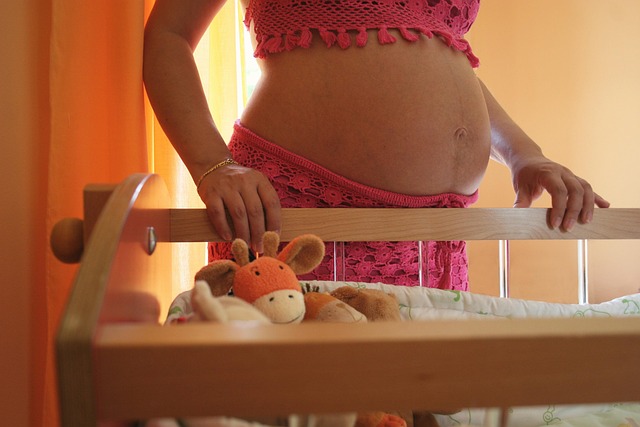Before I became a parent, I had a good understanding of postpartum depression (PPD), thanks to a friend who advocated for mental health awareness. I supported the Postpartum Resource Center of New York through donations and by attending their yearly fundraising gala, The Sounds of Silence. When I learned I was expecting, I reminded my partner to be vigilant about PPD, urging him to speak up if he noticed anything unusual. After all, I felt informed about the condition.
The joy of welcoming our daughter was indescribable. She was a delightful baby—smiling, cheerful, and snuggly. By ten weeks, she was already sleeping through the night. The summer weather allowed us to take long walks and soak in the sunshine, yet as night fell, a wave of anxiety would wash over me.
I fixated on our home’s stairs. Living in a two-story house, I became increasingly preoccupied with the sweeping staircase that featured a landing ten feet above the ground, complete with curved banisters. I would lie awake in bed, drenched in sweat and unable to sleep, replaying terrifying scenarios in my head—thoughts that my precious daughter might fall over the railing and suffer a grave injury. I found myself searching for stair safety tips online and even suggested to my partner that we relocate. To him, my requests seemed like a joke, but I was dead serious. I considered installing cushioned flooring in our foyer; he still thought I was joking.
Desperately, I searched online: how do families with babies manage in two-story homes? I longed for a ranch-style house instead. I began giving unsolicited lectures on stair safety to anyone who would listen. A college friend, hearing my detailed instructions on navigating stairs with a baby, pointed out that I might be experiencing anxiety. I dismissed her concerns at first, but looking back, my obsession with stair safety was a clear sign of deeper issues. I kept my worries to myself, fearful of revealing the extent of my anxiety.
During nursing sessions, I often found myself thinking, “Don’t put the baby in the dryer.” For our daughter’s monthly photos, I insisted they be taken precisely on her birthday, terrified that she might not make it to the next month. Thoughts of death haunted me. I knew we needed a routine, but the very idea of structure sent my anxiety spiraling.
As I read to my daughter, Sandra Boynton’s adorable stories became favorites. However, I couldn’t help but resent the carefree mother pig in Little Pookie. She was confined to the pages of a book, blissfully unaware of the worries that consumed me about my own child’s safety.
When close friends welcomed their babies shortly after mine, I felt a pang of jealousy. Their concerns seemed so normal compared to the anxiety that had ensnared me. I completed the PPD questionnaire at the pediatrician’s office, meticulously crafting my answers to appear fine. I knew how to navigate that multiple-choice test; I was an expert at giving the right responses.
In truth, I was happy—seeing friends, spending time with family, and adoring my new daughter. I could get out of bed and had no harmful thoughts towards myself or anyone else. But one evening, while watching Saving Mr. Banks, a scene struck a chord with me. As the overwhelmed mother considered drowning herself, I thought, “I understand.”
The mental movies I was experiencing continued to play on repeat in my mind, and I didn’t dare speak of them for fear of making them real. The superstition that voicing these thoughts would manifest them was a heavy burden.
Finally, I reached a breaking point. I stopped nursing, suspecting the hormones might be contributing to my anxiety. I turned once more to Google and discovered the term “scary thoughts,” which are defined as intrusive and unwanted thoughts that can plague new mothers. They are driven by anxiety and are surprisingly common, often leading to feelings of shame that prevent women from discussing their experiences.
Realizing I was not alone brought me immense relief. I explored the reading list on the Postpartum Resource Center’s website and discovered the book Dropping the Baby and Other Scary Thoughts. Cover to cover, it resonated with my experience. I began to understand that I was grappling with severe anxiety rather than PPD. Speaking about my fears out loud allowed other mothers to recognize their struggles too. One friend even noted that I had inadvertently diagnosed her with her own scary thoughts.
Every time I shared my experiences, the response of “me too” from other mothers further alleviated my sense of isolation. Acknowledging these intrusive thoughts and discussing them helped me break the cycle of anxiety.
When I learned about Jessica Porten’s experience seeking help, it inspired me to share my story. Pregnancy, childbirth, and new motherhood are profound milestones, and healthcare professionals need to comprehensively understand postpartum mental health. New mothers require support, compassion, and the assurance that they can ask for help without shame as they heal, both physically and emotionally.
For more insights on this topic, check out this excellent resource for pregnancy and home insemination. If you’re exploring your fertility journey, you may also find value in this article on couples fertility options.
Summary:
This blog recounts the author’s struggles with anxiety and intrusive thoughts during early motherhood, highlighting the importance of recognizing and discussing postpartum mental health challenges. It emphasizes the need for support and understanding from healthcare professionals and the community.
